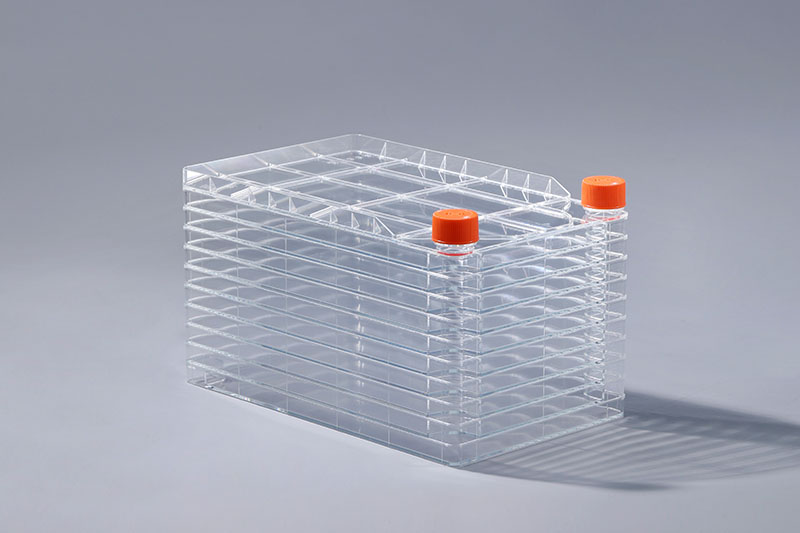The cell factory is a multi-layered cell culture container. It has been used in foreign countries for more than 40 years, and it has only been gradually popularized in China in the past 10 years. This culture device is ingeniously designed, utilizes the maximum culture surface in a limited space, saves a lot of workshop space, and can achieve the purpose of expanding production capacity without the need for workshop renovation.
Stem cells are a class of cells with unlimited or immortal self-renewal capacity capable of producing at least one type of highly differentiated progeny cells. The definition of stem cells has been revised over the years and defined at different levels. Most biologists and medical scientists believe that stem cells are derived from embryos, fetuses or adults with unrestricted self-renewal, proliferation and differentiation capabilities under certain conditions, and can produce progeny with the same phenotype and genotype as themselves. Cells can also generate specialized cells that make up body tissues and organs, and can also differentiate into progenitor cells.
Stem cell therapy is currently a research hotspot in the field of regenerative medicine. According to the US clinical trial database clinicaltrials.gov, there are currently more than 1,300 clinical trials related to mesenchymal stem cells in the world, and 14 new stem cell drugs have been approved for marketing. As of April 28, 2022, a total of 26 products from 21 domestic companies have been granted tacit approval to enter clinical trials (IND). The use of cell factories to scale up the process of mesenchymal stem cells and pluripotent stem cells is an important step in stem cell research.
Cell factories are not only used in the field of stem cells, but also in the industrial production of vaccines, cell and gene therapy and other fields, and play an important role in the biomedical industry.
The FAI climbed 5.9 percent year-on-year in the first 11 months of 2018, quickening from the 5.7-percent growth in Jan-Oct, the National Bureau of Statistics (NBS) said Friday in an online statement.
The key indicator of investment, dubbed a major growth driver, hit the bottom in August and has since started to rebound steadily.
In the face of emerging economic challenges home and abroad, China has stepped up efforts to stabilize investment, in particular rolling out measures to motivate private investors and channel funds into infrastructure.
Friday's data showed private investment, accounting for more than 60 percent of the total FAI, expanded by a brisk 8.7 percent.
NBS spokesperson Mao Shengyong said funds into weak economic links registered rapid increases as investment in environmental protection and agriculture jumped 42 percent and 12.5 percent respectively, much faster than the average.
In breakdown, investment in high-tech and equipment manufacturing remained vigorous with 16.1-percent and 11.6-percent increases respectively in the first 11 months. Infrastructure investment gained 3.7 percent, staying flat. Investment in property development rose 9.7 percent, also unchanged.
 English
English



















































